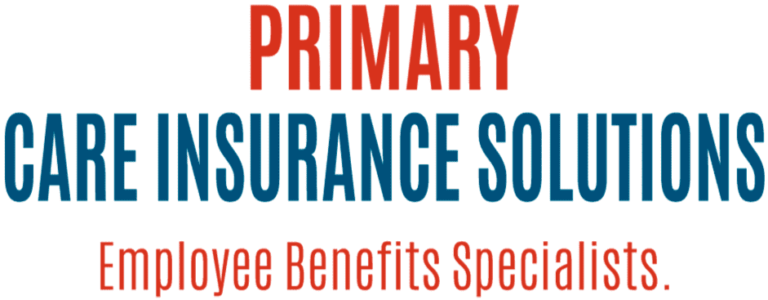Are you spending too much on group health insurance? Employers are now paying 7% more on their annual family premiums. If you’re feeling the pinch, the first place you might look is your deductible plan option.
Defining Aggregate vs Embedded Deductibles
The two most used deductible plans are aggregate and embedded. In this post, we will examine whether an aggregate vs. embedded deductible is suitable for your employees.
Let’s start with aggregate deductibles.
What is An Aggregate Deductible?
First, a health insurance deductible is the money you pay before your insurance coverage kicks in and begins paying for covered medical services.
An aggregate deductible is a family group health insurance term used to define the amount of deductible a family on a single insurance plan must pay to receive reimbursement from the insurance company within a given period of time.
Typically, this is a year. They are widely used in high-claims insurance policies, like health insurance.
Once the deductible is met via in-network medical expenses, the insurer will begin to pay in full for medical services.
What is an Embedded Deductible?
On the other hand, an embedded deductible applies to each family member on a health insurance plan. Each covered plan member has their own deductible to meet before the insurance kicks in for specific services.
What is the Difference Between Aggregate vs. Embedded Deductible?
| Type of Deductible | Applies To | Description |
| Aggregate | Entire Family | Plan won’t pay until total family deductible is met |
| Embedded | Each Individual | Each member needs to meet their own deductible |
Aggregate Deductibles
Aggregate deductibles have only one deductible amount for the entire family plan. Once that deductible is paid, the insurance carrier will begin to pay on claims based on the plan benefits. Out-of-pocket expenses also contribute to the family deductible.
Key feature: One deductible for the entire family.
Embedded Deductibles
Embedded deductibles have a two-part structure. The first is the individual deductible, which each family member must meet for their plan.
The second is the family’s deductible. When individual family members meet their share of the deductible, the carrier begins to pay for their medical expenses according to the plan. Out-of-pocket expenses also count towards this deductible.
One exception is co-insurance or co-pays, which generally do not count towards deductible expenses.
Key feature: Staggered deductible for the family and individuals.
Is Aggregate or Embedded Deductible Better?
“Better” is defined by your needs as an individual or as an employer. For employers, aggregate deductibles are traditionally the better option. They come with lower overall premium costs. However, some families may find them the more expensive option if they have a healthy family.
Embedded deductibles offer families with healthy individuals the more predictable and preferred option. Individuals only pay their deductible for their covered services. However, employers often pay more for embedded deductible plans.
What Type of Deductible is Best?
Defining which type of deductible is best for your employer-sponsored health insurance plan begins with determining who makes up your group plan.
Here’s what you should consider before deciding between the two deductible options.
Costs
Two factors dictate the costs of your group health insurance plans: budget and employee out-of-pocket costs.
For your budget, non-embedded deductibles typically have lower premium costs. Our clients often seek this first and foremost.
Conversely, aggregate plans typically carry higher out-of-pocket medical expenses for employees. Healthy families using your employer-sponsored plans may pay significantly more for their health insurance.
Employee Demographics
An embedded deduction might be the best solution if you have a healthy, young workforce. They will prefer the predictability of the costs.
Additionally, consider what your employees want. You can easily do this with a survey. Gather employee feedback to see whether lower premiums (aggregate) or transparency in costs (embedded) matter most for your group.
Preventive Care
Aggregate deductibles could prevent your employees from going to the doctor because of the upfront costs. Embedded deductibles encourage the opposite.
What are the Benefits of an Embedded Deductible for Employers?
Interestingly, most plans for the Affordable Care Act (ACA) offer an embedded deductible. In most cases, that deductible is about half of the total family plan deductible.
For employers, the benefits of an embedded deductible plan structure include:
Increased Employee Satisfaction
More predictable and transparent costs keep your employees happy. They can more easily budget and plan for health care.
Leads to More Preventative Care
When employees know how much preventative care costs, they’re more likely to seek it out. Healthy employees are more beneficial to employers. In fact, industry reports show a $1.47 return on investment for every dollar invested in a corporate wellness initiative.
What are the Benefits of Aggregate Deductibles for Employers?
Employers searching for an aggregate deductible might be looking at that option for several reasons.
Lower Premiums
The entire family on an aggregate deductible plan must reach the one and only deductible. Since the whole family must reach that deductible, insurance companies see it as less of a risk. As a result, employers pay reduced premiums on their group health insurance plans.
Potentially Lower Plan Utilization
Understanding that everyone has their own premium to meet, some individuals may be less carefree about seeking non-essential medical care. This often leads to lower healthcare costs for employers.
Embedded Deductibles for High-Deductible Health Plans and HSAs
To offer and use a Health Savings Account (HSA), you must have an embedded deductible plan with a deductible of at least $3,200 for an individual and $6,400 for an entire family, according to the ACA.
If you select this option, you’re in good company. According to the KFF, over 30 percent of firms offering health benefits offer an HDHP/HRA, an HSA-qualified HDHP, or both.
When you pair your embedded plan with an HSA, you can help your employees save money on their medical expenses. For example, an HSA gives employees a tax-free way to pay for qualified medical expenses, which saves them money and makes up for any burden caused by the deductible policy.
Need Help Defining Your Deductible?
As an employer, you aim to manage healthcare costs while satisfying your employees.
At PCI, we help you decide the best deductible option for your entire team of employees. Whatever deductible option you choose, whether aggregate or embedded, we’ll set you up for success and communicate with your employees how to make the most out of their plans.
You can learn more about how we ease the transition in your group health insurance plan as your Certified Employee Benefit Specialist by reaching out to the PCI team in Houston today.






